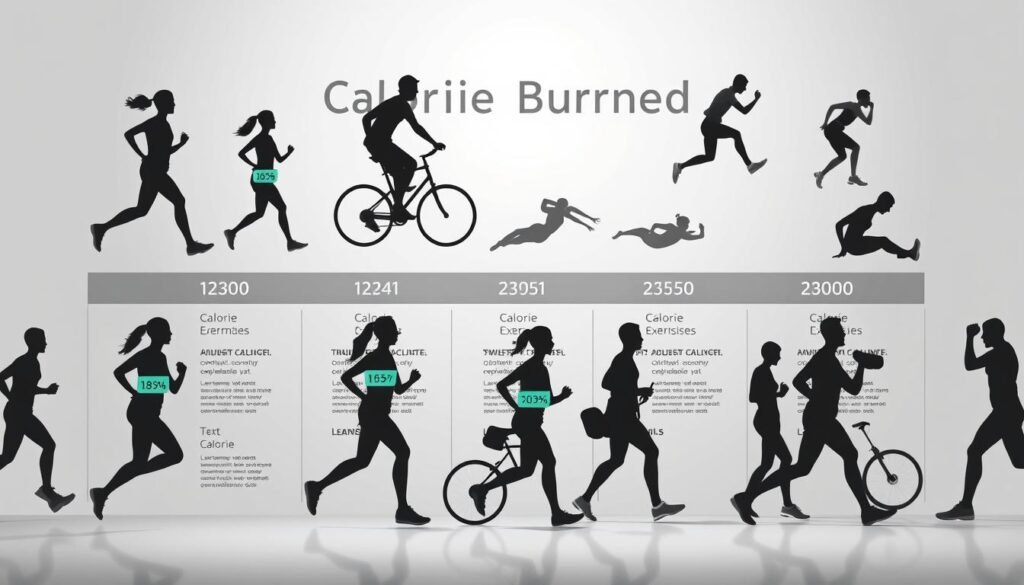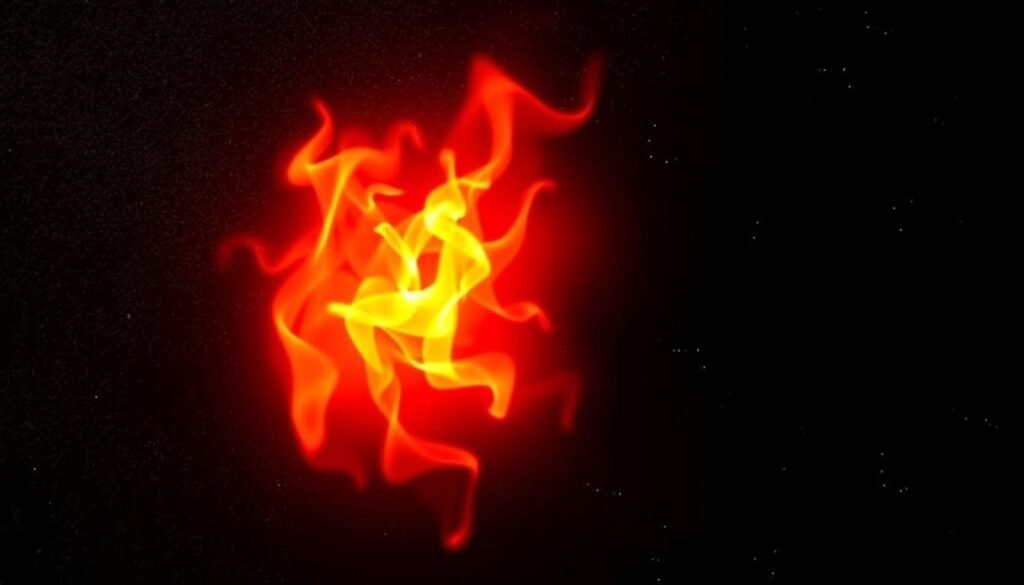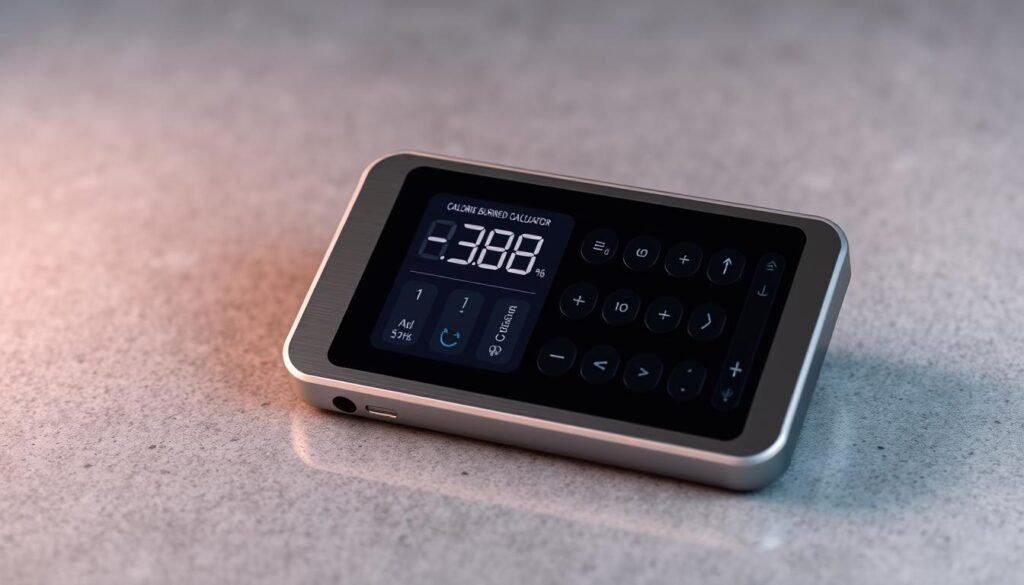Understanding the energy your body expends during various activities is crucial for effective fitness planning and weight management. Traditionally, a calorie was defined as the energy required to raise the temperature of 1 gram of water by 1°C, equivalent to 4.18 joules.
Our Calorie Burned Calculator is designed to help you track the energy you expend, providing valuable insights into your daily energy expenditure. By considering factors such as your weight, activity type, intensity level, and duration, our calculator offers a personalized estimate of calories burned.
By using our calculator, you can make informed decisions about your fitness goals and weight loss strategies. Understanding your daily energy expenditure is key to achieving a healthier lifestyle.
Key Takeaways
- Our Calorie Burned Calculator provides accurate estimates of energy expenditure during various activities.
- The calculator considers factors like weight, activity type, and duration for personalized results.
- Understanding daily energy expenditure is crucial for effective fitness planning.
- Using our calculator can help you make informed decisions about your weight loss strategies.
- Tracking calories burned can lead to a healthier lifestyle and improved overall health outcomes.
Understanding Calories and Energy Expenditure
To grasp the importance of calorie burn, we first need to understand what calories are. Calories are units of energy that our bodies need to function properly. In nutrition, the term ‘calories’ actually refers to kilocalories (kcal), where 1 kcal equals 1,000 “small” calories. This kilocalorie is often called a large calorie, Cal, or Calorie (with a capital ‘C’).
What Are Calories?
Calories are a measure of energy that our bodies derive from consuming foods and beverages. The energy is used for various bodily functions, including physical activity, growth, and maintenance of bodily processes. When we consume more calories than we expend, the excess energy is stored as body fat, which can lead to weight gain over time.
In simple terms, calories are essential for our survival, powering everything from our heartbeat to our movements. Understanding the role of calories in our diet is crucial for managing our weight and overall health.
How Your Body Burns Calories
Our bodies burn calories in various ways. The basal metabolic rate (BMR) is the number of calories our body needs to perform basic life-sustaining functions like breathing, circulation, cell production, nutrient processing, and temperature regulation. Physical activity, including exercise and daily movements, also burns calories, with more intense activities burning more calories.
The thermic effect of food (TEF) is another way our body burns calories, referring to the energy expended to digest, absorb, and process nutrients. Different foods have different TEF values, with protein requiring more energy to process than carbohydrates or fats.
| Activity Level | Calories Burned per Hour | Description |
|---|---|---|
| Sedentary | 60-80 | Little or no exercise |
| Lightly Active | 100-150 | Light exercise/sports 1-3 days/week |
| Moderately Active | 200-300 | Moderate exercise/sports 3-5 days/week |
Understanding how our bodies burn calories during different states (rest, activity, recovery) and why tracking these values matters is essential for effective weight management and overall health.
How Our Calorie Burned Calculator Works

The science behind our Calorie Burned Calculator is rooted in the metabolic equivalent of task (MET) values and a proven formula. Our calculator is designed to provide an accurate estimate of the calories burned during various activities, taking into account your body weight, the duration of the activity, and its intensity level.
The Science Behind Calorie Calculations
The MET value of an exercise is a measure of its energy expenditure. For instance, sleeping has a MET value of 1, while running has a MET value of 9.8, indicating a much higher energy requirement. The MET is defined as the ratio of energy spent per unit time during a specific physical activity to a reference value of 3.5 ml O₂/(kg·min). While MET values allow us to compare activities, they don’t directly measure energy expenditure. To calculate the calories burned, we use the formula: calories = T × MET × 3.5 × W / (200 × 60), where T is the duration of the activity in seconds, and W is your weight in kilograms.
Our calculator employs this formula to deliver accurate results. By understanding how MET values are determined for different activities, you can appreciate the scientific validity behind our calculator’s estimates.
Key Metrics Used in Our Calculator
The key metrics used in our Calorie Burned Calculator include your body weight, the duration of the activity, and the intensity level of the chosen activity. These metrics are crucial for estimating energy expenditure accurately. The formula used considers these factors to provide a personalized calorie expenditure estimate.
By breaking down each component of the calculation process, we make it transparent how we arrive at your personalized calorie expenditure estimate. Understanding these metrics helps users appreciate the scientific validity behind our calculator’s results and how they can be applied to fitness planning.
Factors Affecting Your Calorie Burn Rate
Understanding the factors that influence your calorie burn rate is crucial for effective weight management. Your body’s ability to burn calories is not just about exercise; it’s also influenced by your physical characteristics, the type and intensity of your activities, and how often you engage in them.
Body Weight and Composition
Your body weight and composition play a significant role in determining your calorie burn rate. Generally, individuals with a higher body weight tend to burn more calories performing the same activities as those with a lower body weight due to the increased energy required to move their greater mass. Moreover, body composition is crucial, as muscle tissue burns more calories at rest than fat tissue. This means that two people of identical weight but different body compositions will have different calorie expenditures.
Activity Type and Intensity
The type and intensity of activity you engage in dramatically affects your calorie burn rate. For instance, activities like running and weight training require more energy compared to walking. The intensity at which you perform these activities also matters; higher intensity exercises burn more calories. We compare different activities and their energy requirements to help you understand how to maximize your calorie burn.
- High-intensity activities like running burn more calories than low-intensity activities like walking.
- Resistance training, such as weight lifting, not only burns calories during the activity but also builds muscle, which can increase your resting metabolic rate.
Duration and Frequency
The duration and frequency of your exercise routine also significantly impact your calorie burn rate. Longer and more frequent exercise sessions can lead to both immediate calorie-burning effects and longer-term metabolic changes. This means that not only will you burn calories during your workout, but you may also experience an increase in your metabolic rate after exercise, enhancing your overall calorie expenditure.
By understanding these factors and how they interplay, you can better tailor your exercise and lifestyle habits to achieve your weight management goals.
Using the Calorie Burned Calculator

To get the most out of our Calorie Burned Calculator, follow these simple steps. Our calculator is designed to provide accurate estimates of calories burned during various physical activities.
Step-by-Step Guide
First, choose the activity you want to calculate the calories burned for and determine its MET (Metabolic Equivalent of Task) value. For instance, cycling has a MET value of 9.5. Next, input your weight into the calculator. Let’s say you weigh 90 kg. Then, determine the duration of the activity. If you were biking for 7 hours, you would input this duration into the calculator.
Finally, our calorie calculator uses the formula: calories = T × 60 × MET × 3.5 × W / 200, where T is the duration in hours, MET is the metabolic equivalent, and W is your weight in kilograms.
Interpreting Your Results
Once you’ve input the necessary information, our calculator will provide you with the total calories burned. Understanding these results is crucial for managing your fitness and weight loss goals. You can compare different activities to see which ones give you the most efficient calorie burn for your time investment.
For example, you can calculate the calories burned while cycling and compare it with walking or running to determine the best exercise for your goals.
Common Activities and Their Calorie Burn Rates
Different exercises burn calories at different rates, and knowing these rates can help you plan your workouts more effectively. The energy expenditure of an activity is often measured in MET (Metabolic Equivalent of Task), which indicates the number of calories burned per hour of activity per kilogram of body weight.

Low-Intensity Activities
Low-intensity activities, such as walking, light housework, and gentle yoga, contribute to daily energy expenditure. For example, a 154-pound (70 kg) person might burn approximately 150-200 calories per hour while walking at a leisurely pace. While the calorie burn is relatively low, these activities are accessible and can be incorporated into daily routines.
Moderate-Intensity Activities
Moderate-intensity activities like brisk walking, cycling at a leisurely pace, and recreational swimming offer a balanced approach to burning calories. For instance, brisk walking can burn around 300-400 calories per hour for a 154-pound person. These activities are ideal for those seeking to increase their calorie burn without excessive strain.
High-Intensity Activities
High-intensity activities, including running, HIIT (High-Intensity Interval Training) workouts, and competitive sports, deliver maximum calorie burn in shorter time periods. Running at a moderate pace, for example, can burn approximately 600-800 calories per hour for a 154-pound person. These activities are efficient for those with limited exercise time who want to maximize their calorie burn.
The total calories burned during any activity depend on intensity, duration, and body weight. For example, a longer duration or higher intensity will result in more calories burned. Understanding these factors can help you tailor your workouts to achieve your fitness goals.
- Low-intensity activities contribute to daily energy expenditure and are suitable for all fitness levels.
- Moderate-intensity activities provide a balanced approach to calorie burning.
- High-intensity activities maximize calorie burn in shorter periods.
The Relationship Between Calories Burned and Weight Loss
Creating a calorie deficit is essential for weight loss, and it’s closely tied to the number of calories burned during exercise. When you burn more calories than you consume, your body uses stored energy sources, such as fat, to make up for the deficit.

Understanding this relationship is vital for effective weight management. Let’s explore some key aspects of how calories burned impact weight loss.
The 3,500 Calorie Rule
The traditional 3,500 calorie rule suggests that burning 3,500 calories beyond what you consume leads to approximately one pound of weight loss. While this rule provides a rough estimate, it has several limitations. For instance, it doesn’t account for changes in metabolism or body composition.
Key limitations of the 3,500 calorie rule include:
- It oversimplifies the weight loss process
- It doesn’t consider changes in muscle mass or water retention
- It assumes a linear weight loss trajectory, which isn’t always the case
Setting Realistic Weight Loss Goals
Setting realistic weight loss goals based on sustainable calorie deficits is crucial for long-term success. Aiming to lose 1-2 pounds per week is generally considered safe and achievable. This translates to a daily calorie deficit of 500-1000 calories.
To achieve this, you can:
- Combine increased calorie expenditure through exercise
- Make moderate dietary adjustments to reduce calorie intake
- Monitor your progress and adjust your strategy as needed
By understanding the relationship between calories burned and weight loss, you can create a more effective weight loss plan that suits your needs.
Maximizing Your Calorie Burn for Better Results

To achieve better results from your workouts, it’s essential to understand how to maximize your calorie burn. Effective calorie burn is crucial for weight loss and overall fitness. We will explore advanced strategies to help you get the most out of your exercise time.
HIIT and Metabolic Boost
High-Intensity Interval Training (HIIT) is a highly effective method for burning calories. By introducing periods of rest between high-intensity bursts, you can keep the intensity high for a longer duration. This method not only burns more calories during exercise but also creates a metabolic boost that can elevate calorie burning for up to 24-48 hours after exercise. HIIT achieves this by causing micro-damage in your muscles, which your body later repairs, building stronger muscle.
Combining Strength Training and Cardio
Combining strength training with cardiovascular exercise creates a powerful synergy for calorie burning. Strength training builds muscle that increases your resting metabolic rate, meaning your body burns more calories at rest. This approach is particularly effective for weight management and overall fitness. By varying your exercise routine, you can prevent adaptation and plateaus, keeping your body responding with optimal calorie burning.
By incorporating these strategies into your fitness routine, you can significantly increase your calorie burn and enhance your weight loss journey. Whether you’re a beginner or an advanced exerciser, these tips will help you achieve your fitness goals more efficiently.
Health Benefits Beyond Weight Loss
Regular physical activity offers numerous health benefits that extend far beyond weight management. Engaging in exercises that burn calories not only aids in weight loss but also significantly improves overall health.
One of the most significant advantages of regular physical activity is its impact on cardiovascular health. This includes lower blood pressure, improved cholesterol profiles, and a reduced risk of heart disease.
Cardiovascular Health Improvements
Exercise has a profound effect on our cardiovascular system, enhancing circulation and reducing the risk of heart disease, which is a leading cause of death among both men and women.
Mental Health Benefits
Regular exercise that burns calories also provides significant mental health benefits, including reduced anxiety and depression, improved mood, and better stress management.
Increased Energy and Productivity
Consistent physical activity results in increased energy levels and productivity, as the body becomes more efficient at energy production and utilization.
| Activity Type | Calorie Burn Rate | Health Benefit |
|---|---|---|
| Low-Intensity | Low | Improved cardiovascular health |
| Moderate-Intensity | Moderate | Enhanced mental well-being |
| High-Intensity | High | Increased energy and productivity |
By tracking your calorie burn, you can ensure you’re getting enough physical activity to achieve these health benefits, not just weight loss goals.
Conclusion: Making the Most of Your Calorie Burned Calculator
Our journey through the world of calorie burn calculations comes to an end, but the benefits of using our Calorie Burned Calculator are just beginning. This tool is designed to help you understand your energy expenditure and make informed decisions about your fitness routine and nutrition.
By using the Calorie Burned Calculator, you can track your progress over time, set realistic goals, and make adjustments to your fitness routine as needed. It’s essential to remember that this calculator is most effective when used as part of a comprehensive approach to health that includes proper nutrition, adequate rest, and a balanced lifestyle.
- Understand your personal calorie expenditure to make informed decisions about exercise and nutrition.
- Use the calculator to track your progress and set realistic goals.
- Combine the calculator with a balanced lifestyle for optimal results.
By following these tips and consistently using the Calorie Burned Calculator, you can optimize your health and fitness outcomes. The benefits of regular physical activity extend far beyond weight loss, improving your overall health and well-being.
FAQ
How accurate is our Calorie Burned Calculator?
Our calculator provides an estimate based on various factors, including body weight, activity type, and duration. While it’s not 100% accurate, it gives a reliable indication of the energy expenditure.
What is the best way to lose weight by burning calories?
To lose weight, we need to create a caloric deficit by burning more energy than we consume. Combining a healthy diet with regular exercise, such as cardio and strength training, can help achieve this goal.
How does body weight affect the number of calories burned during exercise?
Generally, the more we weigh, the more energy our body expends during physical activity. This is because our body needs to work harder to move our body mass.
Can I increase my metabolism to burn more calories at rest?
Yes, we can boost our resting metabolic rate by building lean muscle mass through strength training and incorporating high-intensity interval training (HIIT) into our workout routine.
How often should I use our Calorie Burned Calculator?
We recommend using the calculator regularly to track our progress, adjust our exercise routine, and set realistic weight loss goals.
Are there any health benefits to burning calories beyond weight loss?
Yes, regular physical activity and burning calories can improve our cardiovascular health, reduce stress, and increase energy levels, contributing to overall well-being.

